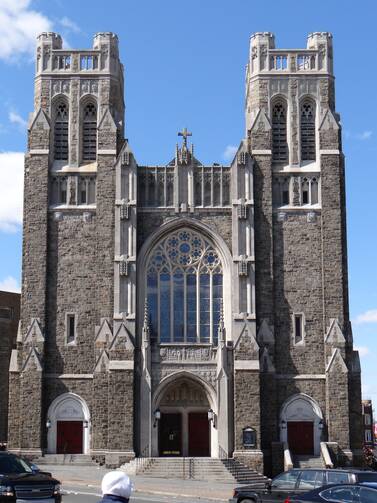What is it about Ash Wednesday that attracts people so? On this day, you see throngs of people in churches everywhere gathered to wait patiently on line for the imposition of the ashes upon their foreheads, to be told: “Remember man, that thou art dust and unto dust thou shalt return” (or a variation thereof). Apart from Christmas and Easter, this is the one day of the year that really draws people in past the threshold of a church door.
I have often wondered about that: how a solemn and somewhat sorrowful day, one in which we are reminded (as if we ever needed reminders) of how mortal and imperfect we are ranks highly with these two joyous feasts of the Christian calendar. And yet, on another busy workday, the people come and go before another mortal being and, at the moment when the imposition of the ashes occurs, both are reminded how equal we are before God.
Ash Wednesday is one of my earliest memories of church-going. In my toddler and childhood years I went with my mother, Ellen, to my parish church, St. Nicholas of Tolentine, in observance of the various feasts and holy days. I remember it quite well, my first Ash Wednesday. At the time my family lived in the Bronx in one of those stately old buildings, a five-story walk-up—and we lived on the fifth floor.
On this particular Ash Wednesday, my mother (who was my very own personal catechist) took it upon herself to explain to her ever-curious son about what this day was about and its significance for Christian people. She explained it in such a way that a 5 or 6 year old could understand. So, we got ready to go to morning Mass. Mom was ready. I was ready (at least, I thought I was). Together, we proceeded down the stairs, carefully and solemnly, as befitting the day—no hopping, skipping or jumping for me. Out of the building we went; we crossed over to Devoe Park and walked the short distance to that great majestic church that was our spiritual home.
And of course, the moment came: I did as I was instructed. I walked quietly and solemnly up the aisle, and when it became my turn, I was to face-to-face with the priest, with my hand brushing aside the lock of my brown hair so that the priest would be able to put the ashes upon my forehead, in the sign of the cross. When that was done, I turned around and followed my mother down the aisle and back to our seats for the completion of the Mass.
After Mass was over, we crossed the street over to the A&P, where we were to purchase our staples for the Lenten day dinner: fish cakes and fish sticks, green peas and those rounded little potato balls known as Ore Ida’s Tater Tots. And lunch for the next 40 days would be the same: Chicken o’ the Sea tuna, with Hellmann’s mayonnaise on white bread, with a few tomato slices to remove the monotony of it all. (Our shopping was done under the baleful glare of the store’s manager, Mr. Gallagher, a bantam-cock bull-dog of a man who trusted no one—holy or not—who entered or departed his grocery store, holy day or not.) With the official duties of church and supermarket done, we headed home for our Lenten observances.
When we got home, Mom and I took our coats off and Mom proceeded to the kitchen to make our lunch and I proceeded to roam around the house. The thought entered my head: what do ashes look like? With all of the instructions I got about the day’s spiritual significance, I hadn’t thought how it looked. So, I made a bee-line toward the bathroom mirror for an extensive examination of my Ash Wednesday forehead that would have made any respectable probing neurologist proud. I pulled up a stool, and as they say, “gave it a look.”
What I saw confounded me. My meticulously-combed brown hair had covered a big black smudge that was supposed to represent the sign of the cross. It was more dirt than cross; the more I looked, the more crossed I got. With all the talks I endured about the virtue of cleanliness and neatness in children there I was, standing there with all that black dirt on the front of my head, on the top of my face. So, I looked around the bathroom and saw the answer before me: the towel on the towel holder. And before long, the ashes were no more: they were imparted upon the bathroom towel, awaiting its own redemption in the washing machine.
The Ash Wednesday bathroom incident was a long time ago and I have lived many Ash Wednesdays since then. I have learned much since that time about their importance and of their import upon my Catholicism. I wasn’t exactly sure back then what it all meant, though I had a glimmer of it. And now, as I am older, I still hold on to that memory, that glimmer of childhood understanding, and I hope that my understanding and my faith has improved through all those years. It truly is “faith seeking understanding,” but the reverse is also true: my hope as I age is that my understanding will always be “faith-filled,” faithful.
In later years, the church would hang a banner on the gate beside the church every Lent, facing passersby. It said, in Spanish, Vive tu Cuaresma—“Live Your Lent.” That, too, has stayed in my memory. Living faith, understanding faith, being faith-filled: that is a good wish not only for Lent, but for always. And I can thank the curious little fellow who so long ago was involved in the incident of the Ash Wednesday bathroom towel for that.








